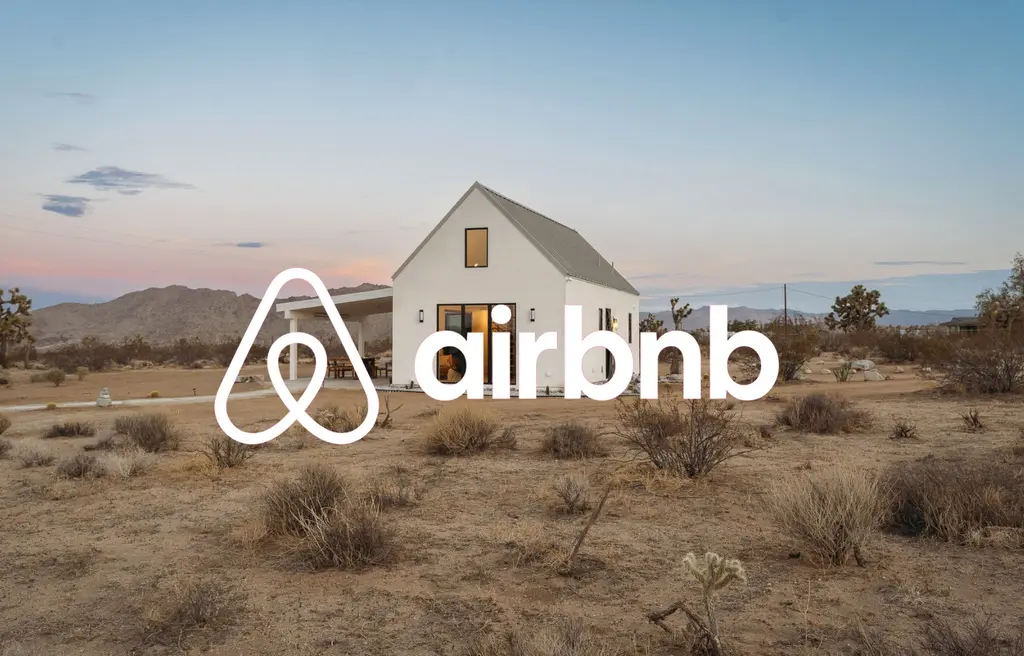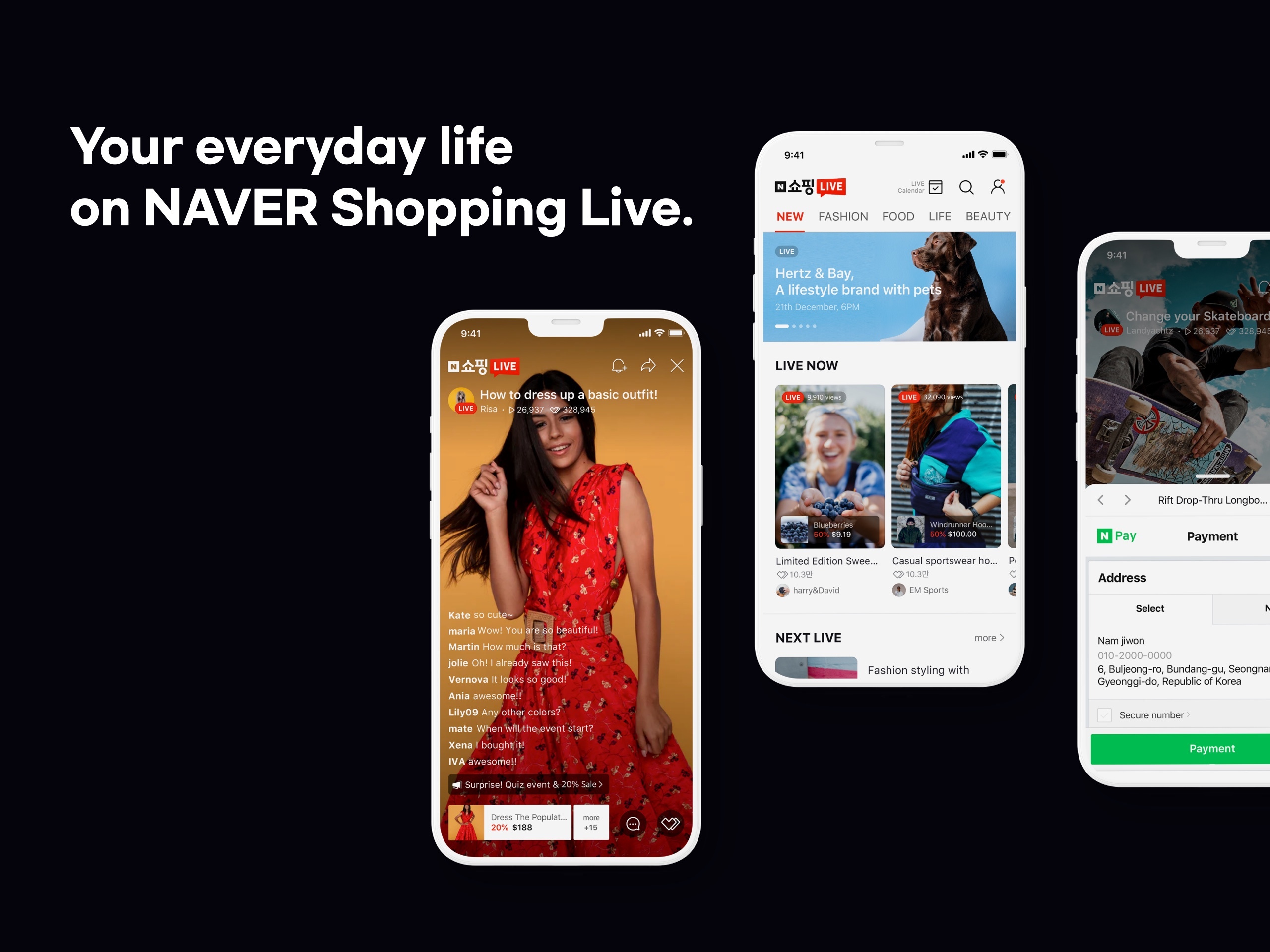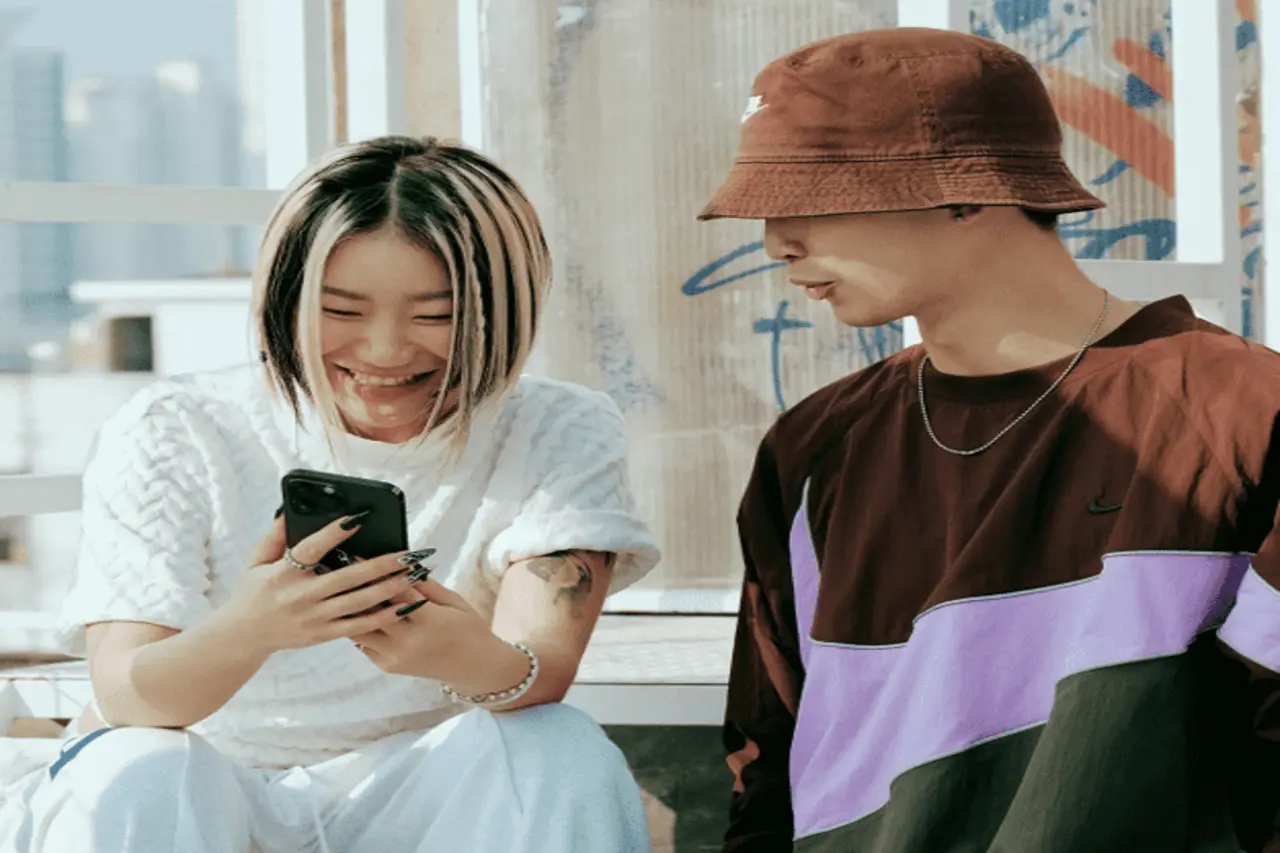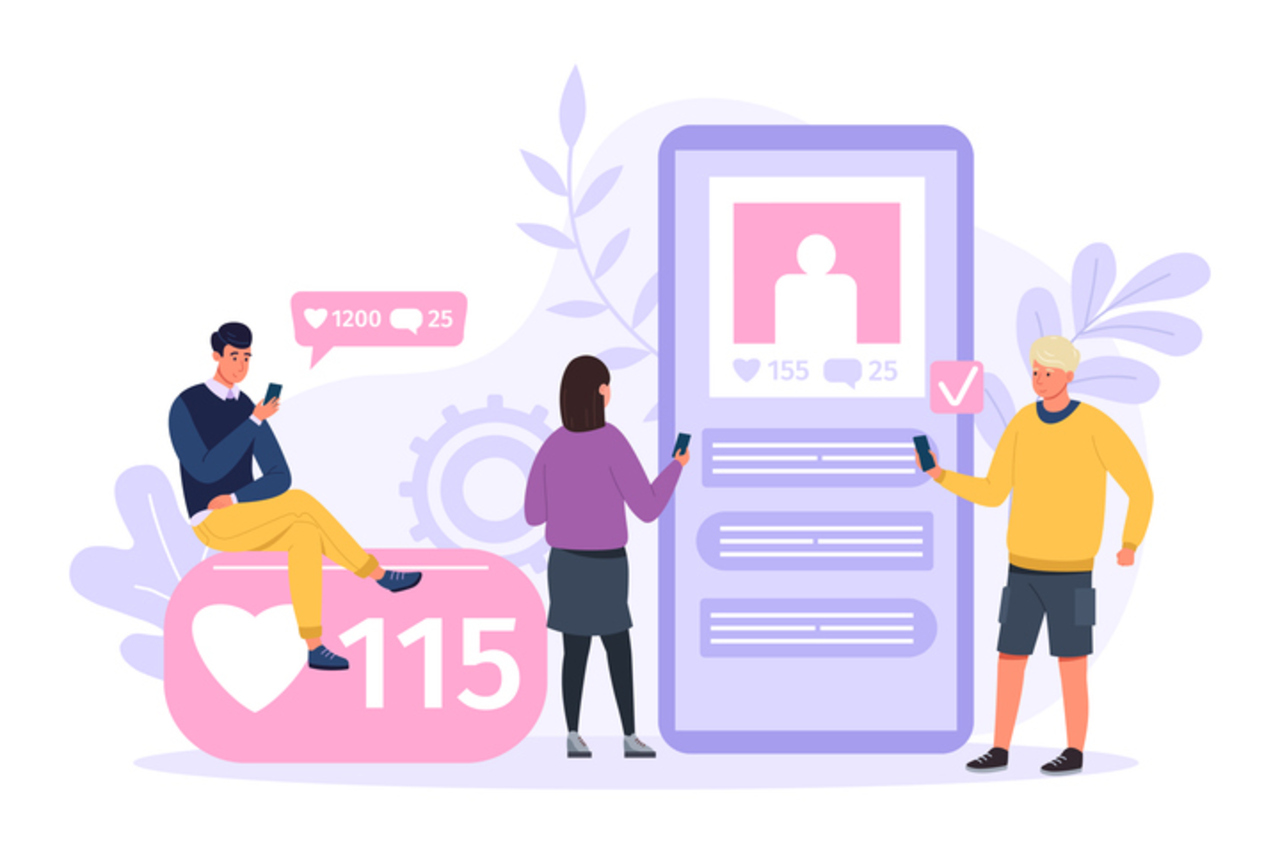
If you’ve scrolled through your Instagram feed lately, you’ve likely noticed a shift in the aesthetic—fewer polished, obviously sponsored posts and more authentic-looking content featuring Korean creators with that unmistakable clean, minimalist style. Introducing the world of Korean influencers who are quietly transforming how global brands connect with audiences both in Korea and worldwide.
Ten years ago, international brands entering the Korean market relied heavily on traditional celebrity endorsements. Today, they’re investing millions in partnerships with Korean digital creators who wield genuine influence over purchasing decisions. The secret behind this major shift lies in understanding the unique ecosystem of Korean influencer marketing—one that operates with its own distinct rules, categories, and measures of success.
Let’s unpeel the multiple layers of the Korean influencer landscape and how savvy global brands are navigating this space to create authentic connections with Korean audiences.
Korean Influencers: The Origin Story
The Korean influencer ecosystem wasn’t born out of corporate marketing departments or agency brainstorming sessions. Rather, it emerged organically alongside Korea’s rapid digital transformation and the global rise of Korean cultural exports (K-wave or Hallyu).
What makes Korean influencer marketing distinctive isn’t just its scale or reach, but its fundamentally different approach to influence itself. While Western influencer marketing often emphasizes direct promotion and clear calls-to-action, the Korean approach prioritizes subtlety, authenticity, and lifestyle integration—creating content where products enhance the creator’s narrative rather than interrupting it.
This unique approach stems from Korean consumers’ sophisticated understanding of digital marketing and their expectations for more nuanced, trustworthy recommendations. The result? An influencer landscape that’s categorically different from what many global brands are accustomed to navigating.
Three Types of Korean Influencers
To decode the science behind successful Korean influencer marketing, let’s break down the three distinct types of Korean influencers that brands encounter in this market:
Type 1: The Power Metrics Players
Picture an Instagram account with 10,000 to 100,000 followers, impressive engagement rates, and a feed filled with perfectly staged content spanning multiple categories—from travel and beauty to fashion and lifestyle products. These accounts maintain robust metrics, participate in virtually any marketing opportunity available, and frequently appear in hashtag search results.
Here’s the catch: many of these accounts maintain their impressive stats through purchased followers, likes, and comments—a common practice in the Korean digital ecosystem. While they excel at generating visibility (appearing in top search results when users look for relevant content), their actual influence over consumer behavior may be significantly limited.
Type 2: The Authentic Micro-Influencers
Now imagine a much smaller account—perhaps just 500 to a few thousand followers—where every interaction feels genuine. These accounts are run by what Koreans might call “인싸” (insiders or socially connected individuals)—people with authentic social connections who are actively engaged in their communities.
For these creators, growing their social media presence is a genuine interest, and brand collaborations represent just one aspect of their digital experience rather than their primary focus. Their feeds predominantly feature authentic lifestyle content, with promotional posts comprising just a small percentage of their overall sharing.
While these accounts rarely rank high in hashtag searches (making them less immediately visible), they wield genuine influence with their audiences. Their recommendations carry significant weight precisely because followers trust their authenticity and relate to their content on a personal level.
Type 3: The Semi-Celebrities
Between mainstream celebrities and everyday content creators exists this distinctive third category: individuals who’ve achieved public recognition beyond social media but aren’t managed by traditional entertainment agencies.
This group includes fashion brands fitting models (chosen for their style and appearance), regional TV personalities, weather forecasters, and other public-facing professionals who’ve cultivated strong personal brands on social media.
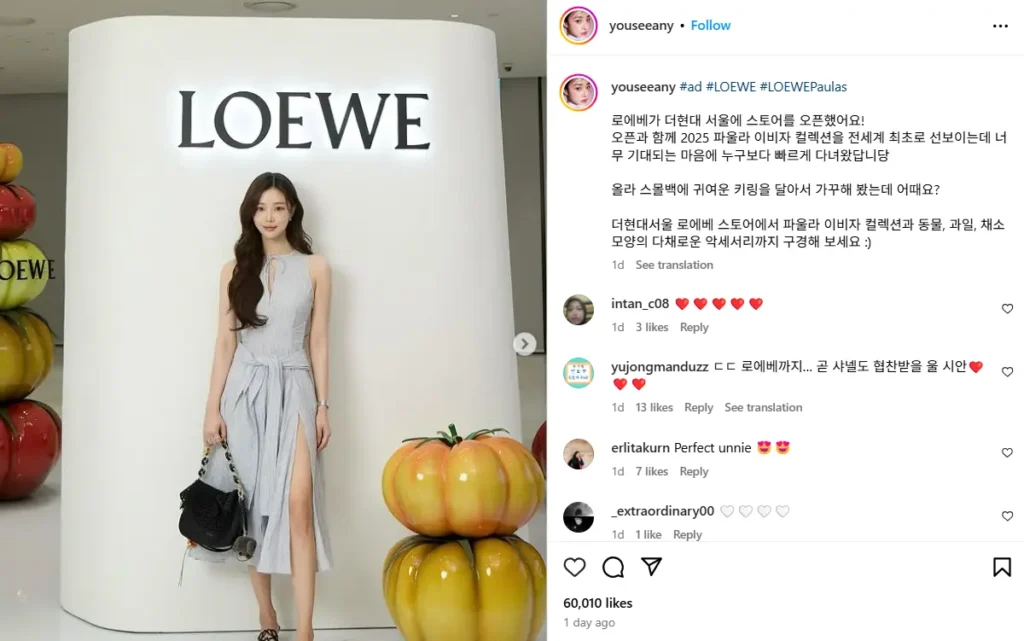
These accounts feature authentic (not purchased) engagement, selective brand partnerships, and a level of public credibility that enhances their influence. While they offer significant conversion potential, they typically require higher compensation and individualized negotiation for each campaign.
Platform Strategy: Where Your Brand Belongs in Korea’s Digital Ecosystem
For international brands, choosing the right platform is just as important as selecting the right influencers. While Instagram dominates discussions of global influencer marketing, Korea’s digital landscape offers multiple platforms with distinct advantages.
Instagram: Visual Storytelling for Global Appeal
Instagram remains popular for brands targeting both Korean and international audiences simultaneously. It’s particularly effective for:
- Fashion and beauty brands showcasing visual aesthetics
- Luxury products targeting affluent, globally-minded consumers
- Travel and hospitality brands highlighting experiential content
- Products with strong visual appeal and minimal need for technical explanation
The platform’s visual nature makes it ideal for brands that can tell their story primarily through imagery, but less effective for products requiring detailed information or technical specifications.
Naver Blog: Korea’s Content Powerhouse
Unlike Instagram, Naver Blog (a platform many international marketers overlook) offers an official influencer program with structured categories.
For brands targeting Korean consumers—particularly for information-intensive decisions like travel planning or luxury purchases that benefit from detailed content—Naver Blog often delivers more substantial results than Instagram.
What makes Naver Blog particularly powerful:
- Long-form content capability with detailed product information
- Higher trust factor among Korean consumers for purchase decisions
- Better searchability within Korea’s dominant search engine
- Structured categories that allow precise targeting by interest
- Content longevity that continues generating traffic months after posting
Brands selling products that require education, explanation, or detailed comparison find Naver Blog particularly effective for driving considered purchases rather than impulse buys.
The Localization Imperative: Why Korean Campaigns Need Korean Expertise
Perhaps the biggest mistake international brands make when entering the Korean influencer market is assuming that strategies effective in other markets will translate directly. Korean consumers have distinct expectations for how brands engage with influencers, and campaigns that ignore these cultural nuances often fail despite substantial investment.
Cultural Context: The Hidden Rules of Korean Promotion
Korean influencer content follows unwritten rules that might seem subtle to outsiders but are immediately apparent to local audiences:
- Indirect endorsement is preferred over direct promotion
- Visual harmony between product and influencer aesthetic is non-negotiable
- Relationship narrative matters more than product features
- Subtle integration of products into lifestyle contexts outperforms obvious placement
- Community acknowledgment through comments and interaction enhances credibility
Campaigns that violate these implicit expectations often face consumer skepticism or, worse, backlash for appearing inauthentic or “too foreign” in approach.
Language Beyond Translation: The Nuance of Korean Marketing Communication
While English-language campaigns can reach some Korean consumers, truly effective influencer marketing requires native-level Korean language expertise—not just for translation but for cultural resonance.
Korean marketing language has its own conventions, humor styles, emotional triggers, and trending expressions that evolve rapidly. Content that simply translates Western messaging misses these cultural touchpoints, immediately signaling to consumers that the brand doesn’t truly understand the market.
Building Your Korean Influencer Strategy: A Roadmap for International Brands
For international brands looking to leverage Korean influencers effectively, here’s a strategic framework that addresses the unique challenges of this market:
Step 1: Define Your Korean Audience Segment
Before approaching any influencers, clearly define who you’re targeting within Korea:
- Age demographic and digital behavior patterns
- Geographic concentration (Seoul vs. regional cities)
- Income level and purchase priorities
- Cultural identification (globally-oriented vs. traditionally Korean)
- Digital platform preferences and consumption habits
This foundation determines everything from influencer selection to content approach and platform strategy.
Step 2: Determine Your Authenticity Approach
Based on your brand positioning, decide where you fall on the authenticity spectrum:
- Full Localization: Adapting completely to Korean aesthetic and communication norms
- Global Brand, Local Voice: Maintaining global brand identity while adopting local communication styles
- International Appeal: Leveraging your foreign origin as part of your brand story
This decision impacts which influencers will resonate with your strategy and how content should be developed.
Step 3: Partner with Local Experts
Rather than attempting to navigate the Korean influencer landscape alone, partner with local experts who can provide:
- Cultural verification of campaign concepts
- Influencer vetting beyond surface metrics
- Negotiation support with appropriate compensation structures
- Content review for cultural appropriateness
- Performance analysis based on local benchmarks
These partnerships dramatically increase campaign effectiveness while preventing costly cultural missteps.
Step 4: Develop a Multi-Tier Influencer Strategy
The most successful international brands in Korea employ influencers across multiple categories:
- Awareness Tier: Larger accounts (including some Power Metrics Players) to generate initial visibility
- Credibility Tier: Semi-Celebrity influencers who bring public recognition and authority
- Conversion Tier: Authentic Micro-Influencers whose recommendations drive actual purchase behavior
This balanced approach maximizes both reach and effectiveness while distributing the budget strategically.
Step 5: Create a Platform-Specific Content Strategy
Develop distinct content approaches for each platform rather than using identical content across all channels:
- Instagram: Visually-driven, aesthetically cohesive content that integrates naturally
- Naver Blog: Detailed, informative content with substantial product information
- YouTube: Narrative-driven content that showcases product experience over time
Each platform requires specific formatting, tone, and content structure to perform optimally.
Case Study: Airbnb Localizing a Global Platform
Airbnb faced significant cultural barriers entering Korea, where traditional hospitality norms and privacy concerns made their sharing economy model initially unfamiliar. Their influencer strategy focused on:
- Cultural Translation: Working with travel influencers to explain the concept in culturally relevant terms
- Safety Narrative: Partnering with trusted female influencers to address safety concerns
- Unique Experience Focus: Highlighting experiences unavailable through traditional accommodation
- Host Spotlights: Featuring Korean hosts to build local credibility
By allowing influencers to tell the Airbnb story in their own words rather than imposing global messaging, the platform achieved significant growth despite initial cultural hesitation.
Korean Influencers for Global Brands
As Korean cultural influence continues to expand globally, we’re seeing two parallel trends emerge:
- Korean influencers with global reach: As K-beauty, K-fashion, and K-entertainment continue gaining international popularity, Korean influencers are increasingly able to impact consumers beyond Korea’s borders.
- Korean influencer methodologies applied globally: The subtle, authentic approach pioneered in Korea is gradually influencing global influencer practices as consumers worldwide become more sophisticated about detecting overt promotion.
For international brands, this creates both challenges and opportunities. While navigating the Korean influencer landscape requires significant cultural understanding and local expertise, brands that master this ecosystem gain not only access to Korean consumers but insights applicable to increasingly sophisticated influencer markets worldwide.
The brands that will succeed in this evolving landscape are those willing to adapt their approach—treating Korean influencer marketing not as simply another market to conquer with existing strategies, but as a fundamentally different model requiring genuine cultural engagement and strategic flexibility.
Looking to develop a Korean influencer strategy tailored to your brand? Contact our specialized team to explore a customized approach that aligns with your specific objectives, audience, and budget requirements.
